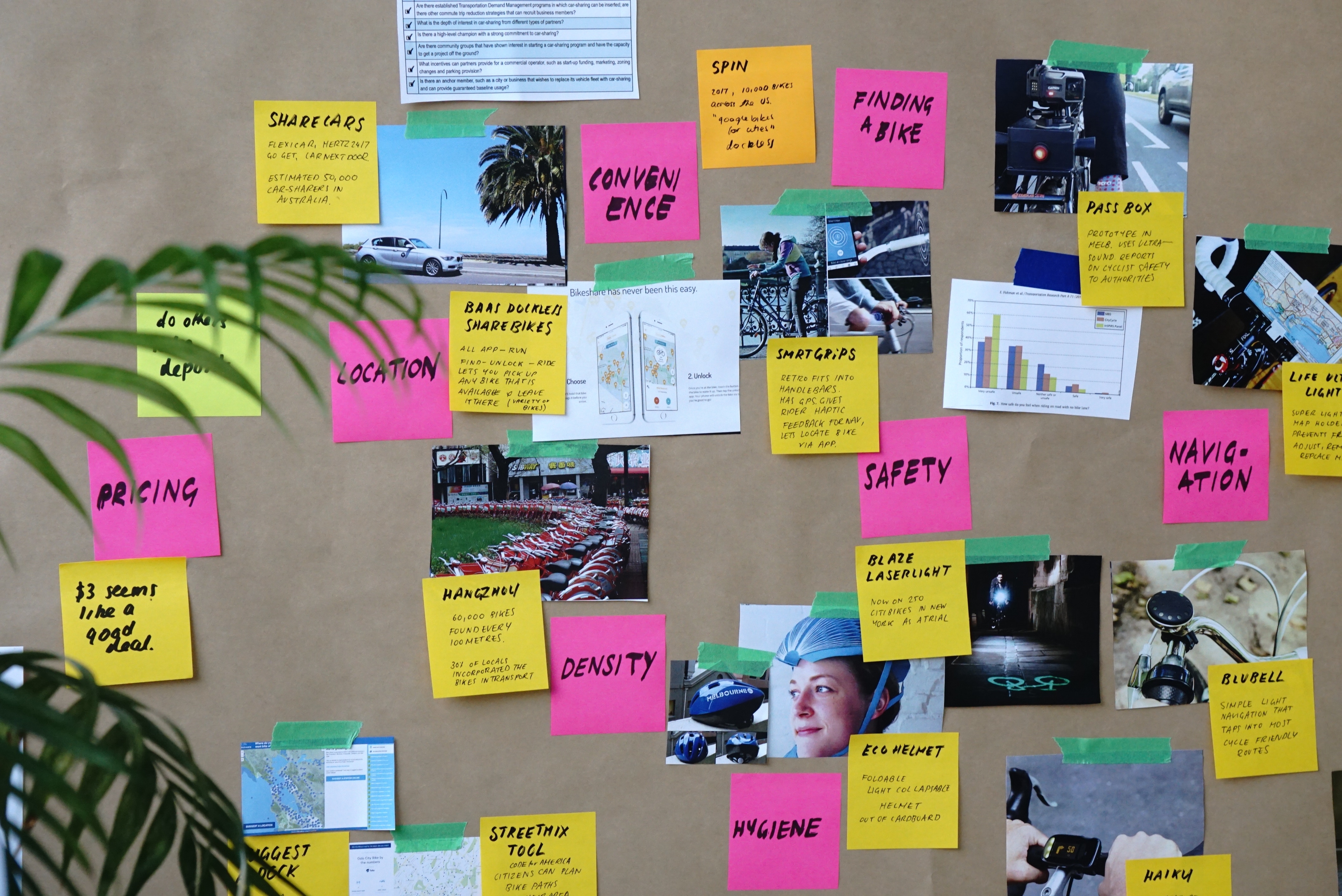Design thinking finds its way more and more into training, and instructional designers are tasked with using this human-centered approach. It consists of five stages: Empathize, Define, Ideate, Prototype, and Test.
In the Empathize and Define stages, designers connect with the learner and gain more insight into what drives and motivates them through interviews, observations, empathy mapping and learner personas. Equipped with that knowledge, designers can leverage all this information and organize, interpret and make sense of it, which helps them define a problem statement. A good problem statement is human-centered, broad enough for creative freedom, narrow enough to make it manageable, and actionable. Designers can use a simple post-it technique to gather their thoughts, use the Point of View (POV) problem statement approach, or use the How Might We Question (HMW) question technique to define the problem statement. The first two stages are the basis for the Ideation stage in which designers generate ideas. In the Ideation stage, designers think outside the box to identify new solutions to the human-centered problem statement. In order to stimulate free thinking, there are a couple of different techniques designers might use to get as many ideas or problem solution as possible.
Ideate
Generating ideas can be a challenging task if designers are not in the right environment and are able to take a step back. The Ideation stage is about looking at every possible angle for the well-defined problem statement. It is about pushing boundaries and effective collaboration. Some best practices for the Ideation stage include having a skilled facilitator leading the session, working in a creative environment featuring the work from the two previous stages, setting a time limit, and having a “there are no bad ideas” mindset. Designers should be bold and curious, challenge common beliefs and explore each other’s ideas. It is also not to late too flip ideas over to reveal new insights.
Ideation Techniques
The sky’s the limit when it comes to ideation techniques, however, they should combine the rationale with the creative and must match the kind of ideas designers seek to generate. It’s about using our imagination to come up with the best possible solution.
The most common technique is brainstorming, in which designers collaboratively build good ideas based on the problem statement defined, as well as the team’s idea. Once certain ideas form, designers might want to categorize them and dedicate certain areas in the room for specific ideas. The team can then add their additional ideas as they walk around the room (brainwalking).
Another useful technique is the worst possible idea which is better suited for more reserved individuals to produce bad ideas, which in turn result in valuable threads. It’s a also a fun way to flip the Ideation stage on its head and help relax everyone on the team.
A more graphical approach to ideation is the use of mind maps, which allow designers to connect ideas and find major and minor qualities for each. Or designers might want to sketch or storyboard their ideas using rough sketches or diagrams to express possible solutions. In order to dive deeper into solutions for a problem statement, the SCAMPER technique can be a great tool to produce solutions. SCAMPER stands for Substitute, Combine, Adapt, Modify, Put to another use, Eliminate, and Reverse. Designers can use the action words to question the problem statement at hand. A great example for this technique are new services such as Uber or AirBnB. The founders thought about ways to change the current cab and hotel industry, and voila Uber and AirBnB were born. The SCAMPER technique can go hand in hand with the use of analogies to draw comparisons to communicate ideas better. For a more outgoing team of designers, consider role-plays in learner journey steps to find solutions. If a design team is stuck at any point, it can always fall back to their target audience and have them help crowdsource ideas. And sometimes, we just have to take a step back and take a creative pause in order to refresh our minds.
The Ideation stage is really the heart of the design thinking process. It is here that designers come up with human-centered design solutions. Choose an ideation technique that best matches the problem statement at hand, as well as the experiences of your design team. One technique might work well one day, but not the next. MIx them up to get the creative juices flowing and push the envelope to come up with outstanding solutions that help your learners succeed.
Tags: Design Thinking, Learning Experience, Usability, UX/UI
Trackback from your site.
